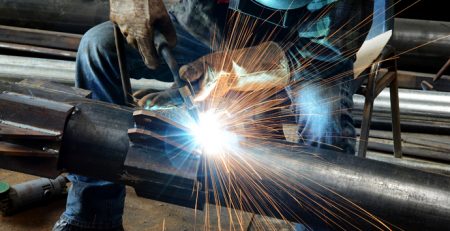Safety Regulations while Working at Heights
Working at height can be very dangerous. They contributed to 26% of all the fatal injuries in construction in 2010/2011. It is however notable that these types of injuries are completely preventable and thus every party involved should take steps to make sure that work related injuries are completely eliminated.
A place is said to be at height if the person could be injured by falling form it. Also, access and egress to such a place can be classified to be work at height. Examples of such places include; working on a ladder, working on a flat roof, working on formwork within an excavation etc.
In 2005 the Work at Height Regulations were enforced on 6 April. These were meant to address the growing concerns mainly by SMEs of the high number of work related injuries especially in UK. They were also a result of the European Council Directive 2001/45/EC which specified minimum health and safety requirements for equipment use within the workplace. They completely replaced all the previous legislations and as such were a massive paradigm shift from the previous laws. They apply to all work at height where they is any risk of a fatal fall.
As stated earlier, work at height injuries are completely preventable. It is thus the responsibility and duty of the employers in UK to prevent any such injuries from occurring. The HSE regulations clearly stipulate the requirements that duty holders must follow.
They must:
- Use every resource at their disposal to completely avoid work at height.
- If it is a must for one to work at height then they should use work equipment and other measures to minimise the risk of falling.
- If the risk cannot be completely eliminated then they should use any means to minimise the distance and by extension the consequences of a fall.
Before any work is done it is very important for duty holders to ensure that:
- A proper risk assessment is carried out to makes sure that all work is well planned and organised.
- Any work at height is carried out by a competent person. This is so as to minimise the risk of falling by anyone working at height.
- All equipment is properly inspected to make sure that they work well.
- The work surface is properly maintained so as to ensure that one does not slide for instance.
There are however exceptions where regulations do not apply.
- Walking up and down a staircase in the office.
- Sitting on a chair.
- Working in an office located on the upper floors.
- Work done by an employee on their private residence not for the purpose of business or trade.
The workers also have a responsibility to ensure that they minimise the risk posed by working at height. Since such risks is a direct hazard to them then they must:
- Report any safety hazards to their employers.
- Use any equipment properly and follow any training and instruction given to them concerning the task at hand.
It is advisable for any employee to bring to the attention of their UCATT safety rep if they determine that some of the instructions pose any risk to their life.
Ladder Safety
Ladders are crucial for people working at heights. Many injuries have been directly or indirectly caused by ladders. It is thus important for contractors, designers and clients to makes sure that ladders or scaffold used in the workplace are in the right shape.
A ladder should only be used once a risk assessment done deems it necessary. However under no circumstance should it be used for more than 30 minutes, this is very dangerous for the person using it. When a ladder is being used one should follow the guidelines to reduce the risk of falling.
The ladder should be checked before it is used. The HSE website (https://www.hse.gov.uk/falls/ladders.htm) contains the guidelines on how to check for leaning and step ladders.
However there are basic rules that one should follow to make sure that they do not fall off a ladder.
- While climbing or on the ladder make sure that your body is centred within the ladder.
- Wear appropriate footwear i.e. non-slip footwear and shoes with clean soles.
- Always keep three points of contact with the ladder.
- The rungs should be kept clean and in the right condition.
Measures should be taken so as to prevent the ladder from wobbling, slipping and falling. The feet of the ladder should be checked daily. The ladder should be fastened at the bottom and the top and when resting the ladder, lay it on a firm surface at the top.
A ladder is also very susceptible to breakage. It is thus important that one be careful not to break anything while using a ladder. You should position the ladder at a 75 degree angle from the wall. Also make sure that anyone on the ladder does not carry heavy weights, only weights up to 10 kg are allowed












